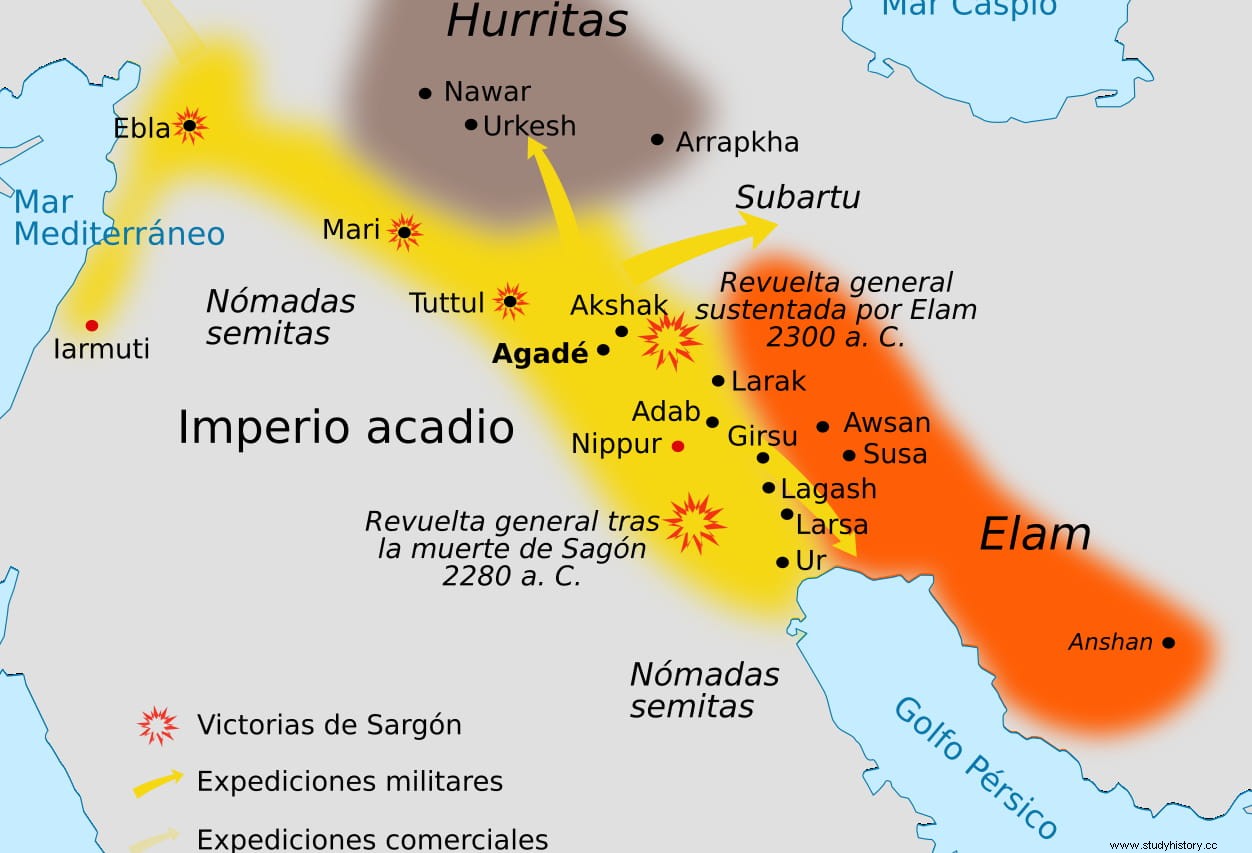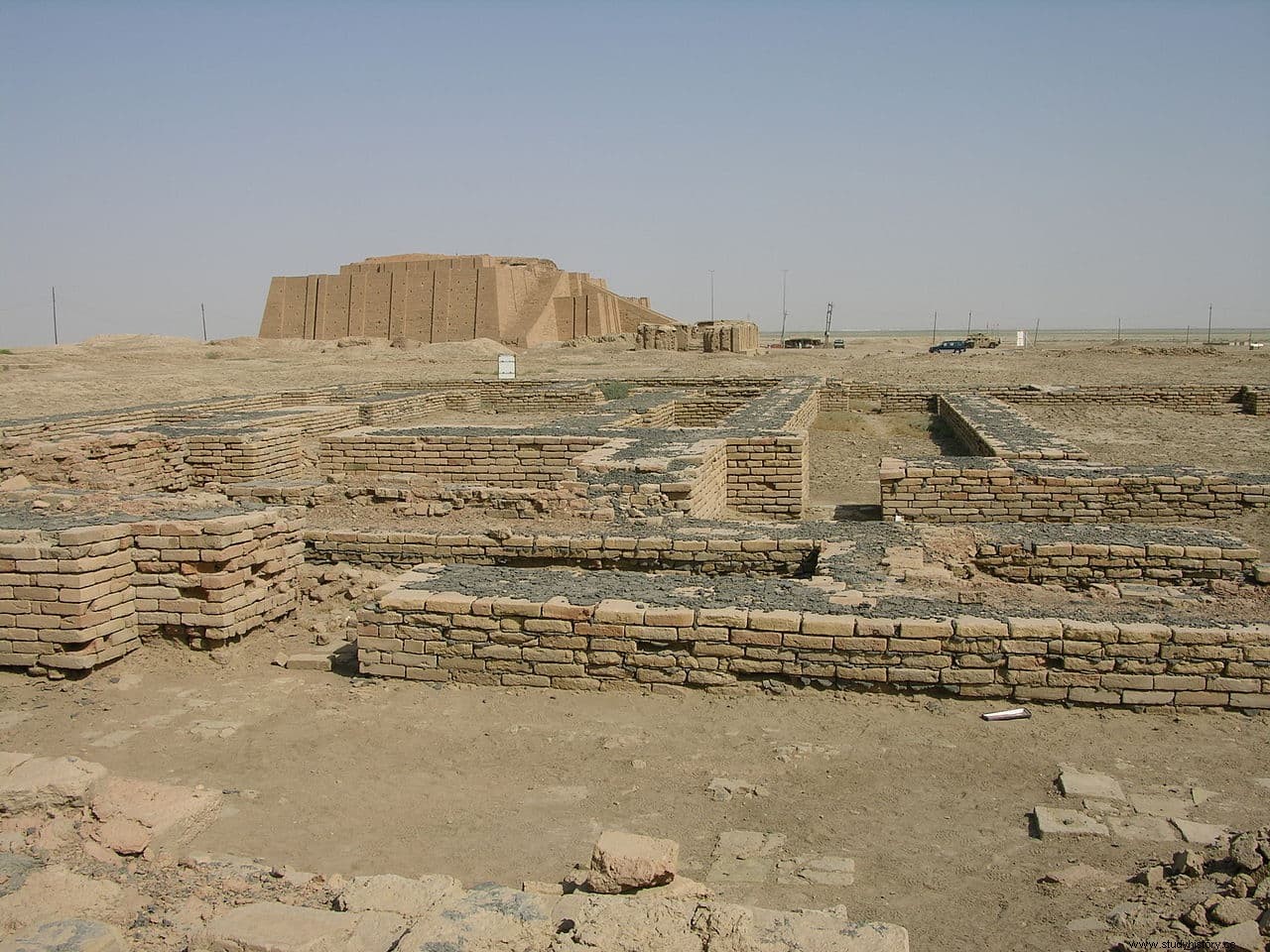Some time ago we published here an article dedicated to the reopening of Carchemish, an ancient city discovered by the archaeologist George Smith in 1876 and excavated by Leonard Woolley in 1911 with the help of Lawrence of Arabia, before he came to prominence in the First World War by uniting the Arab nations in arms. Well, another work of Woolley's was in Ur, where in 1927 he found a singular piece:a stone disk whose main interest is that it contains an allusion to Enheduanna; It will not say anything to most, but it turns out that it is one of the first names of women that appear documented in all of history.
Woolley is considered the first modern archaeologist because during his excavations in the Sumerian city Ur, carried out between 1922 and 1934, he found geological evidence of a great flood that appeared in the Gilgamesh Epic (an epic narrative from more than four millennia ago about the homonymous character) and that inspired the biblical account of the Universal Flood. It was also he who brought to light the Sumerian royal necropolis and the famous royal standard, a kind of wooden box whose panels are decorated with friezes of war and customs. But, in addition, among the objects recovered for the Museum of Archeology and Anthropology of the University of Pennsylvania, there was the circular piece that we mentioned before and that today is known as the Enheduanna Disc.

It is a votive disc of limestone (first it was said to be calcite and then translucent alabaster) 25.6 centimeters in diameter by 7.1 in thickness that was buried in the Giparu area, the temple complex of Sin- Luna (sanctuary), very close to the famous ziggurat of Ur.
It was not in good condition and it seemed that it had been deliberately destroyed at the time, so it had to be put back together piece by piece. The result of this patient and meticulous work resulted in the visibility of two faces, one of which shows the representation of some type of religious ceremony with four figures making an offering to the lunar god Nannar-Sin (Nannar in Sumerian, Sin in Akkadian), the son of the almighty Enlil.

One such figure has been identified as the priestess Enheduanna, standing behind a priest and in front of a servant and a scribe. She appears highlighted in size to show her importance, wearing a dress with woolly ruffles and a headband (not seen if the typical one with horns, a divine symbol), from which braids come out. On the other side of it is an inscription with her name: "Enheduanna, zirru priestess, wife of the god Nanna, daughter of Sargon, king of the world, in the temple of the goddess Innana" .
Perhaps because her tomb was not found, Enheduanna was not given much importance until the end of the 1950s, when after finding more sources (an alabaster disk, cylinder seals) the authors began to dedicate articles and publications to her. to the mysterious but suggestive character.
It is easy to deduce that she was not just any woman but the daughter of the great Sargon I, the creator of the Akkadian Empire, who in the mid-24th century B.C. It covered a large part of Mesopotamia, not only in the basins of the Tigris and Euphrates rivers, but even as far as Lebanon and the Mediterranean coast.
Following in the footsteps of a precursor, Lugalzagesi, the king of Umma who had taken over southern Mesopotamian and whom he took prisoner, Sargon conquered one city-state after another:Uruk, Ur, Lagash, the aforementioned Umma, Elam... He established the capital at Agade (Akkad) and earned the nickname the Great , his feats being continued by his grandson Naram-Sin, who was the one who reached the maximum extension of the Akkadian domain reaching Susa until the Guti stopped him.

Naram-Sin was the son of Manishutusu, the second offspring that Sargon had with his wife Tashlultum and who had inherited the throne after the first-born Rimush, his lineage being the one that was perpetuated through eight children. But Naram-Sin and Rimush had more siblings:Ibarum, Abaish-Takal and our Enheduanna, the youngest of the family, born around 2300 BC. Actually we don't know what her name was because Enheduanna is not a person's name but a dignity.
The etymology of it, according to experts, involves a combination of words like En (in Sumerian, high priest or priestess), hedu (adornment) and an (sky), from which the meaning High Priestess Adornment of Heaven is deduced. It is true that other interpretations say that the particle an it would be the name of the celestial divinity Anu or, combining both versions, that the whole word was nothing but a poetic way of designating her as priestess of the Moon.

In other words, to be honest, we do not know the real name of that princess, but even so, she has gone down in history for various reasons. The first, being one of the first women to be identified in documents -albeit cheating a bit-, preceding Emmenanna, the daughter of Naram-Sin, who, like her great-aunt, was also a high priestess of the god Nannar. -Sin and the goddess Inanna.
This brings us to the second reason, which is the important role that the princesses had in embodying the apex of the priestly caste. Something, probably intentionally established by Sargon to have greater control over Sumeria, the region to which Ur belonged and used to rebel; In that sense, Enheduanna was the first to assume that role.
When her brother Rimush came to the throne, she continued to serve as high priestess until she became involved in one of those frequent Sumerian revolts, leading to her deposition and expulsion from Ur for refusing to accept a usurper, Lugalanne, as a suitor.; Rimush subsequently put down her insurrection and reinstated her in office, in which she continued during the tenure of her nephew Naram-Sin.

She seems to have achieved such prestige that she would later be deified, at least partially. She tells it herself in a work entitled Nin-Me-Sar-Ra (Exaltation of Inanna), which is the third reason to remember her especially because she has to be considered the first known writer of hers.
Exaltation of Inanna It is a religious composition in one hundred and fifty-three verses that, as its own title says, signed in honor of the Sumerian goddess Inanna, lady of love and war, protector of the city of Uruk and later syncretically fused with the Babylonian and Akkadian Ishtar (Later she was also identified with the Phoenician Astarte and the Greek Aphrodite).
Inanna was the daughter of Nannar-Sin, to whom Enhedanna also glosses in the Hymn to Nanna; It also includes an autobiographical part of her, as we pointed out before, since her invocation to Inanna was intended to ask her to recover her position.

Written in cuneiform characters on clay tablets (although numerous copies were made centuries later, not only in Ur but also in Nippur and Lagash), it is part of a corpus literary in which they are also In-nin sa-gur-ra (two hundred and seventy-four verses), In-nin me-hus-a and the forty-two hymns that have been gathered from the compilation of thirty-seven tablets from various periods and that, being addressed to the temples of Sumeria and Acad, are known as Hymns of the Sumerian temples .
It is possible that other works considered anonymous could be attributed to Enheduanna; In any case, it reveals interesting facts about the considerable role of this woman, so different from the subject of the other females of ancient Mesopotamia, almost a parallelism with something she writes when she equates Inanna with her husband Anu:he was the supreme god of Sumerian mythology, father and sovereign of the others, who would also be assimilated by the Assyrians as Assur and by the Babylonians as Marduk. A good reference for that comparison because, after all, Enheduanna, princess, priestess and poet -not necessarily in that order-, played a remarkable role:as high priestess she not only directed the cult and managed the giparu she, but she also supervised the harvests and managed the administration of the grain silos, the farms and even the taverns, just as she served as a cultural and political melting pot between the Sumerian and Akkadian traditions.
